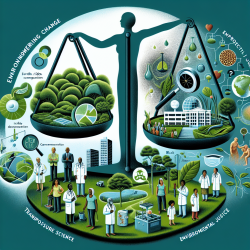Introduction
As a practitioner working with young individuals in informal settlements, understanding the intricate relationship between psychoactive substance use and high-risk sexual behaviors is crucial. A recent study titled "Do sexual expectancies and inhibitions predict high-risk sexual behaviours? Evidence from a cross-sectional survey among young psychoactive substance users in informal settlements in Kampala, Uganda" provides valuable insights into this association. This blog will explore how you can leverage these findings to enhance your practice and encourage further research in this domain.
Key Findings
The study conducted in Kampala's informal settlements highlights several critical findings:
- Sexual Expectancies: Many young individuals believe that psychoactive substances improve sexual performance, increase pleasure, and boost confidence in approaching sexual partners. These expectancies significantly correlate with engaging in high-risk sexual behaviors.
- Sexual Inhibitions: The use of psychoactive substances is linked to increased likelihood of engaging in sex, difficulties in refusing sex, and forgetting to use condoms, all of which contribute to high-risk sexual behaviors.
- Prevalence and Impact: The study found that a significant portion of the participants engaged in multiple sexual partnerships and inconsistent condom use, often under the influence of substances.
Implications for Practice
As a practitioner, these findings can inform your approach to addressing high-risk sexual behaviors among young individuals using psychoactive substances:
- Education and Awareness: Develop programs that educate young people about the risks associated with substance use and its impact on sexual behavior. Highlight the short-lived nature of perceived benefits versus long-term consequences.
- Behavioral Interventions: Implement interventions that focus on reducing substance use expectancies and inhibitions. Encourage alternative coping mechanisms and decision-making strategies that do not rely on substances.
- Collaborative Efforts: Work with community leaders and organizations to create supportive environments that address the root causes of substance use, such as unemployment and lack of education.
Encouraging Further Research
While this study provides valuable insights, further research is necessary to deepen our understanding of the relationship between substance use and high-risk sexual behaviors. Consider the following areas for future exploration:
- Longitudinal Studies: Conduct studies that track individuals over time to establish causal relationships between substance use and sexual behaviors.
- Intervention Effectiveness: Evaluate the effectiveness of different intervention strategies in reducing high-risk behaviors among young substance users.
- Cultural Context: Investigate how cultural beliefs and norms influence substance use expectancies and sexual behaviors in different settings.
Conclusion
The study from Kampala underscores the significant role that sexual expectancies and inhibitions play in high-risk sexual behaviors among young substance users. As practitioners, integrating these insights into your practice can enhance your ability to address these behaviors effectively. By promoting education, implementing targeted interventions, and encouraging further research, we can work towards reducing the prevalence of high-risk sexual behaviors in informal settlements.
To read the original research paper, please follow this link: Do sexual expectancies and inhibitions predict high-risk sexual behaviours? Evidence from a cross-sectional survey among young psychoactive substance users in informal settlements in Kampala, Uganda.










